Pink plants are perpetually popular + this tradescantia is no exception. I’ve had this houseplant for a couple of years but every time winter has come around, it’s been a bit of ‘plant care-experiment time’ with keeping this Tradescantia fluminensis tricolour happy.The first thing to say is that this is a beautiful plant. It’s a plant that is worth struggling a bit for over the cooler months. It’s a plant that can add softness, colour and interest to your interior, and it’s one I wouldn’t be without.
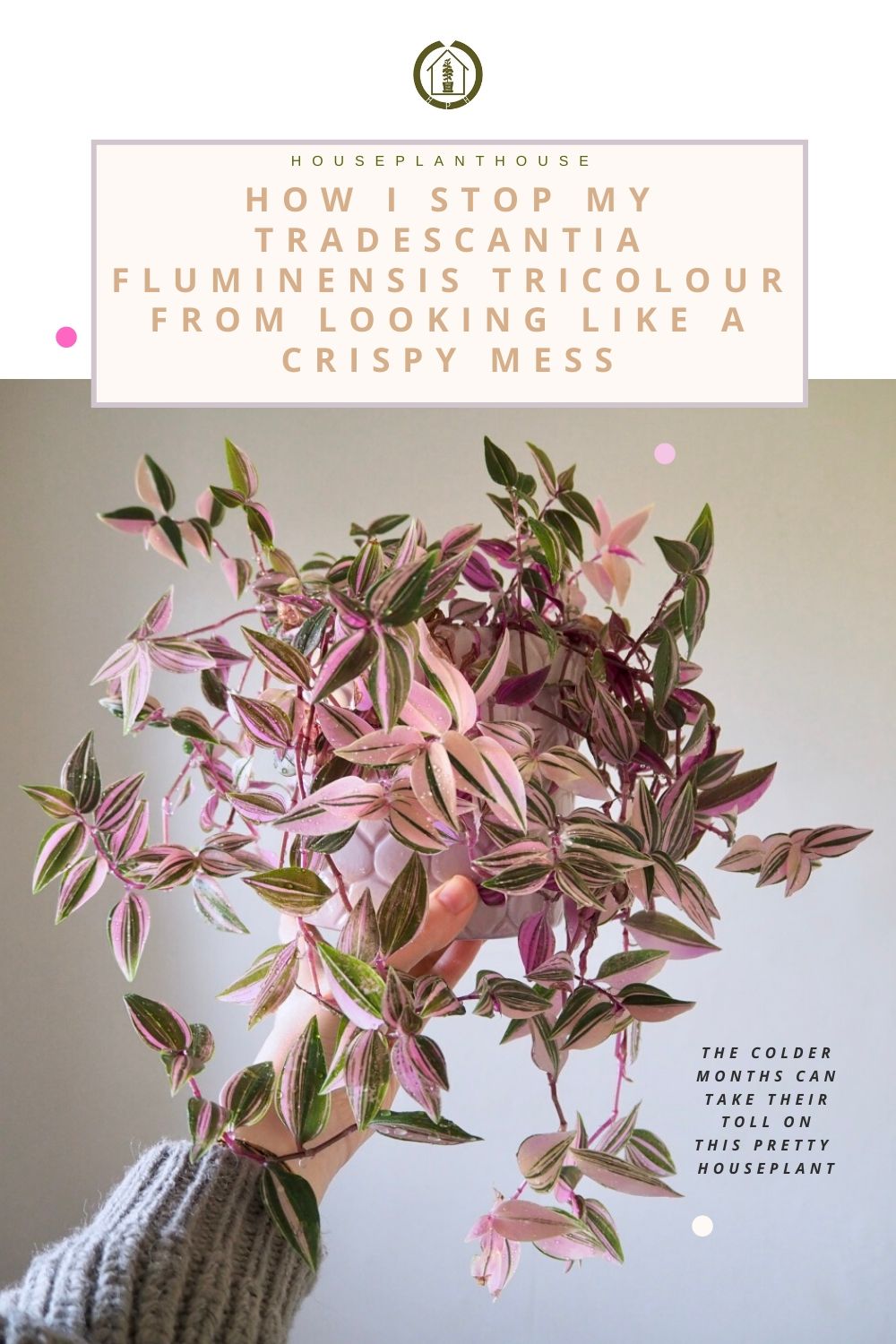
With Spring here in a matter of days, we can slowly exhale a collective sigh of relief that winter is out of the picture. I might still be wearing my beret but this is quite possibly more a sartorial choice than out of sheer necessity. Keeping a large houseplant collection over the colder months can be rather…dull + sometimes filled with anticipation of what might suddenly take a turn for the worse.
It’s worth saying that this pretty bunch of leaves is more challenging than other more common varieties of Tradescantia such as the zebrina due to its variegation + thin, light pink foliage. Last winter I massacred the whole plant in January because it was looking like quite a sorry state + proceeded to root the stems in water where they lived happily for almost two months. Come February I popped the cuttings into compost + voila! I had made a considerably more attractive plant than it’s January manifestation.
This winter however, I decided to tweak my care routine to see if I could avoid cutting the whole plant back + I’m happy to report it has been a success. The photos in this post are of my plant today so you can see honestly how it is looking right now, at the end of winter.
I’ll tell you what I did…

| L I G H T |
Compared to the previous year, I moved my plant off the desk + instead kept the pot around 1 metre away from my south facing window, out of direct light for the most part. On bright days, it would get about 45 minutes of direct late afternoon sunshine but no more. It was huddled amongst other plants on my shelf. In terms of keeping my plant nice and pink, I have found this light level to really work well for variegation. If you notice your plant reverting to green (sometimes as a result of inadequate light) you’ll want to trim any particularly green stems + discard. This allows the plant to put more energy into the pinker, more variegated growth – you can do this any time you give your plant a trim.
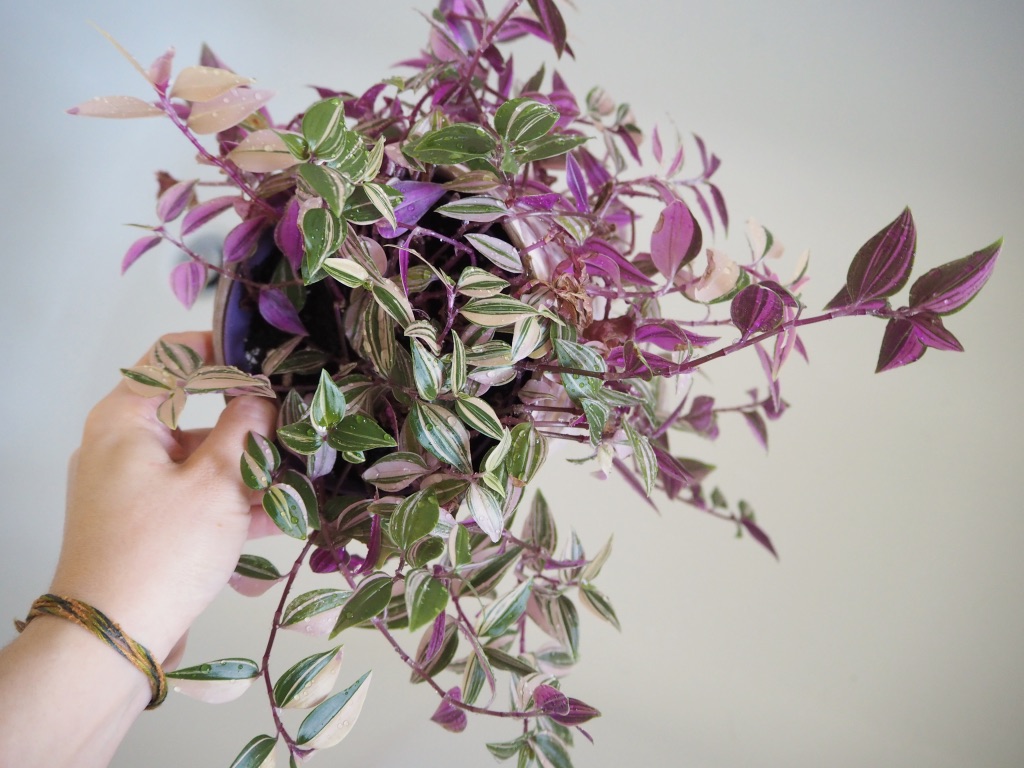
| W A T E R I N G |
In terms of watering, I watered less than the previous winter; waiting almost until the plant started to visibly droop. This plant is definitely not as outwardly demonstrative as say, my fittonia + after a drink, it could take around 24 hours until it looked properly perky again. I am alternating watering on a plate from the bottom + watering from the top, both times using tepid water. Water temperature really does seem to make a difference to this plant so consider this if you normally get your water straight from the tap.
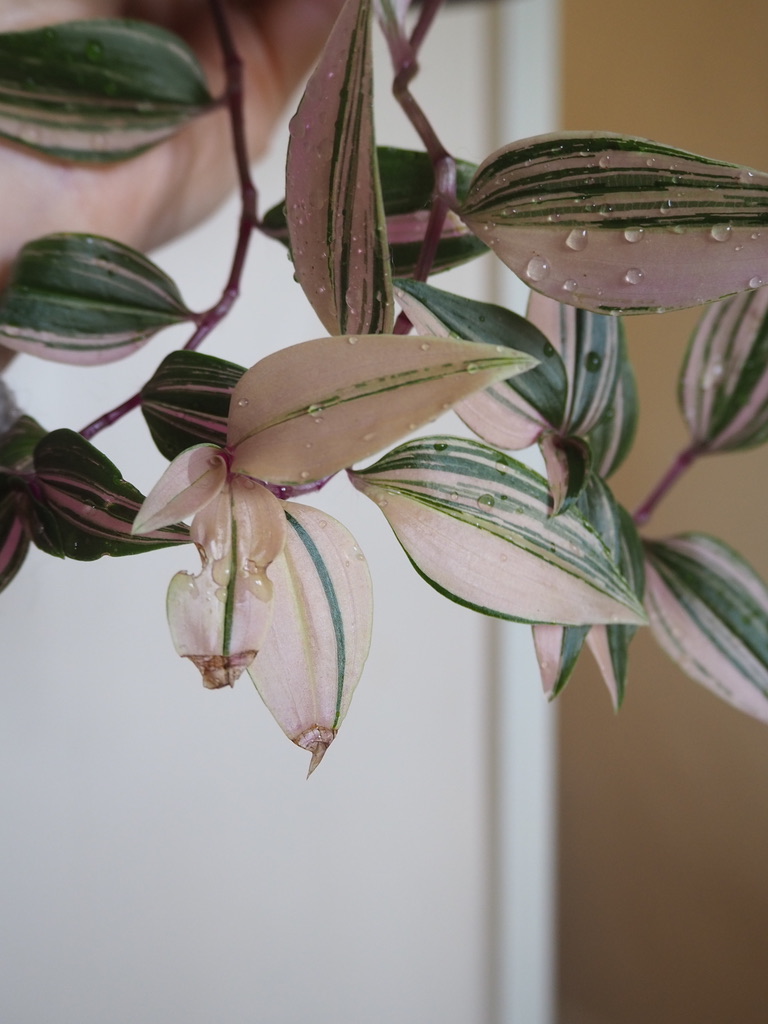
| T E M P E R A T U R E |
I found this year that my tradescantia fluminensis coped pretty well with a lower temperature. It was the other side of the room to my radiator + I only have single glazing so at night things have a tendency to get a bit chilly in there. I think this cooler temperature was key in keeping the growth slow (it didn’t go dormant) but also keeping things less crispy.
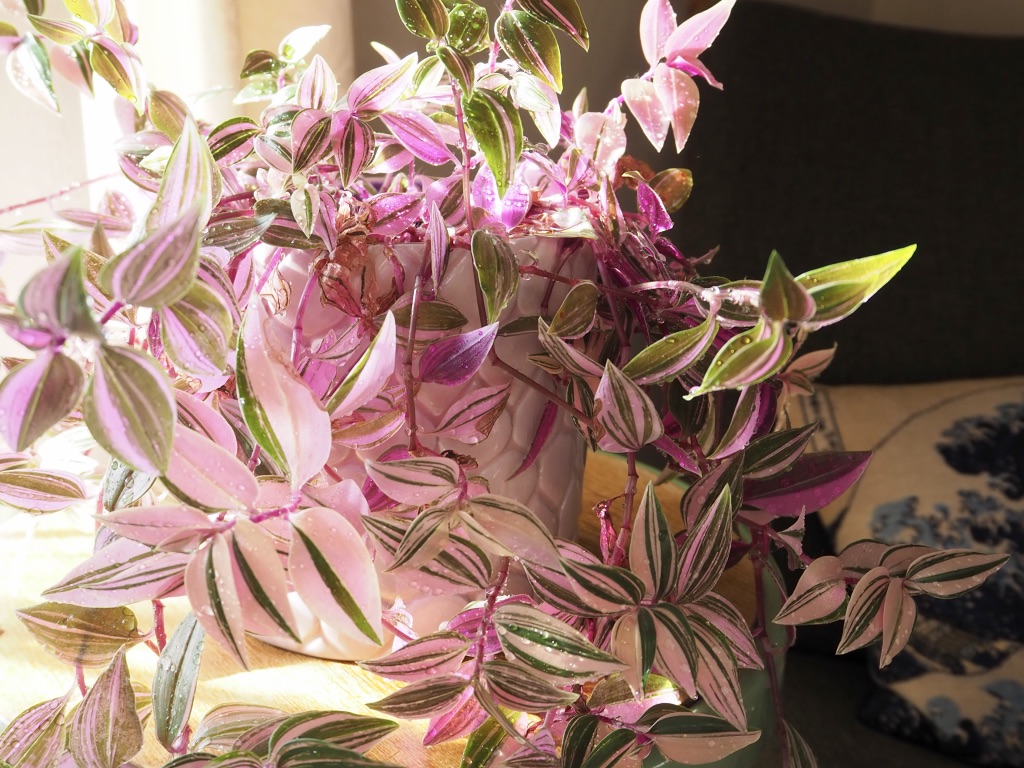
| H U M I D I T Y |
Whilst these plants generally grow quite well with normal household humidity, grouping pots together with other plants can help to raise the humidity a little bit. This won’t make a drastic difference but in combination with the other contributing factors it’s worth a shot. It’s how I display my houseplants anyway – most surfaces have them on in clusters (…too many plants)! Dry air as a result of central heating hell is often the cause of leaf crisping, especially with thin + delicate foliage such as this.
Something I found particularly beneficial was when alternating from plate-watering + watering from above, I would take the plant over the shower + water the plant this way – using tepid water from a soft spray of the shower head until water would run out of the drainage holes. An additional benefit here was that this method simultaneously showered the foliage of the whole plant too. Even though misting (or showering as a more ‘extreme’ form) does not really increase humidity, it does have its benefits + most plants do like it. In their natural environments they will of course be used to rain, so giving them a shower every few weeks will be a bit of a pamper for them. The key here is to let the plant dry off a bit in a warm room before moving back to it’s spot. Showering is a very effective way of keeping the leaves free from dust which can help to prevent pests. I noticed a reduction in crispy leaf edges with an increase in showers I was giving my tradescantia fluminensis tricolour.
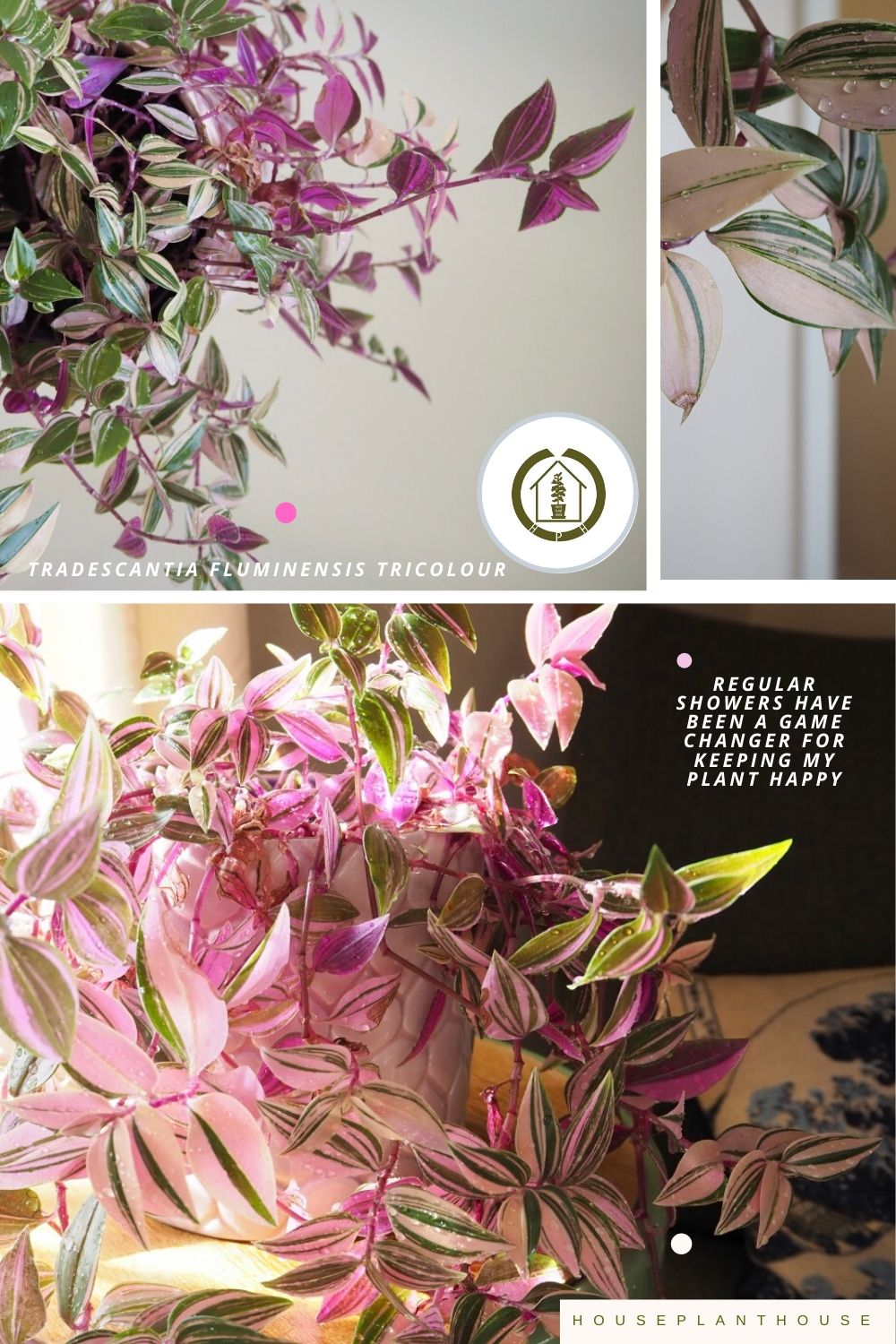
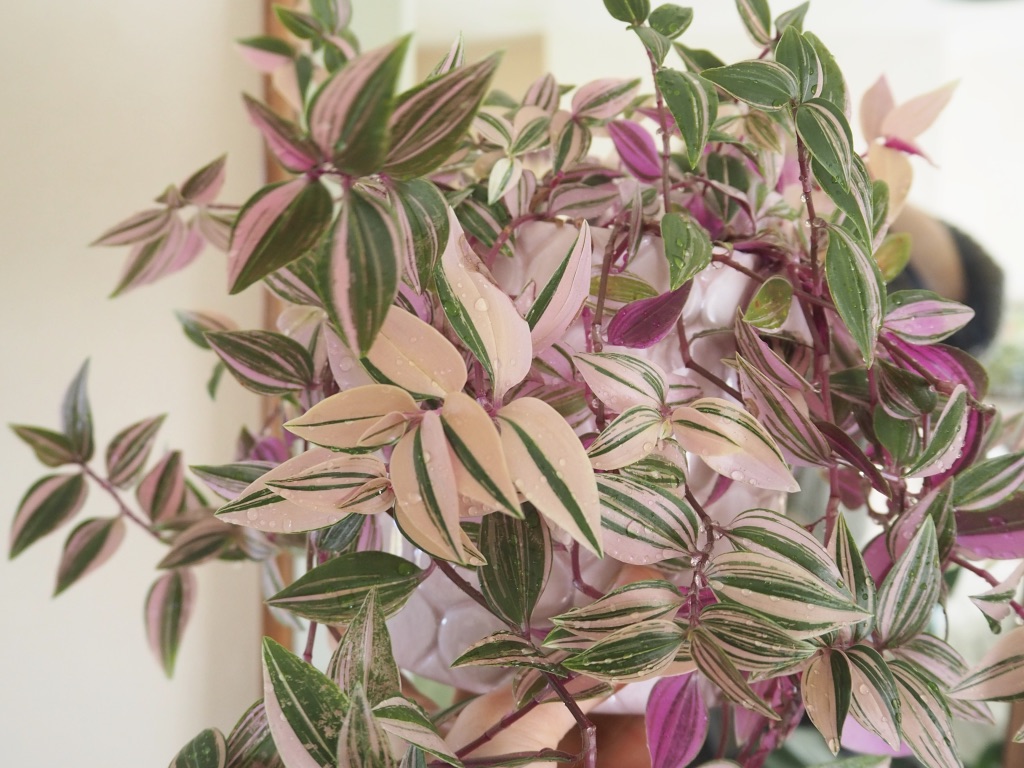
| I F T H I N G S G E T B A D… P R O P A G A T E ! |
If your plant looks like it’s on the brink, the best thing to do is to take cuttings like I initially did – there’s nothing wrong with doing that! As well as all of the above, I did still take some cuttings this winter to tidy up the shape of the plant and remove any crisping (there will always be some!) The easiest way to improve a straggly plant is to give it a haircut, root the stems + then pot back into the same pot to create a fuller look. I just need to take my own advice here and get pruning some of my other hanging plants… Philodendron brasil I have my eyes on you…
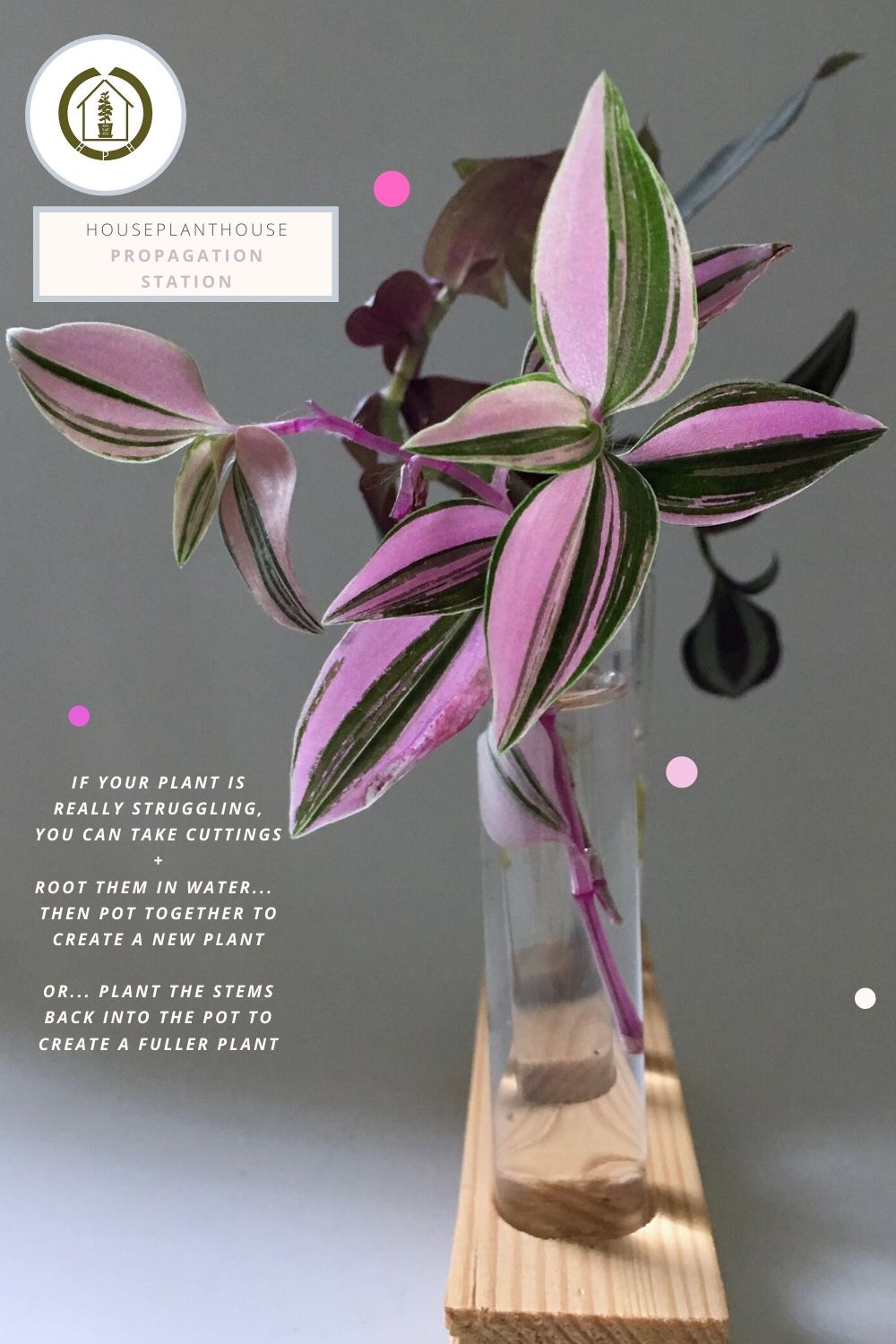
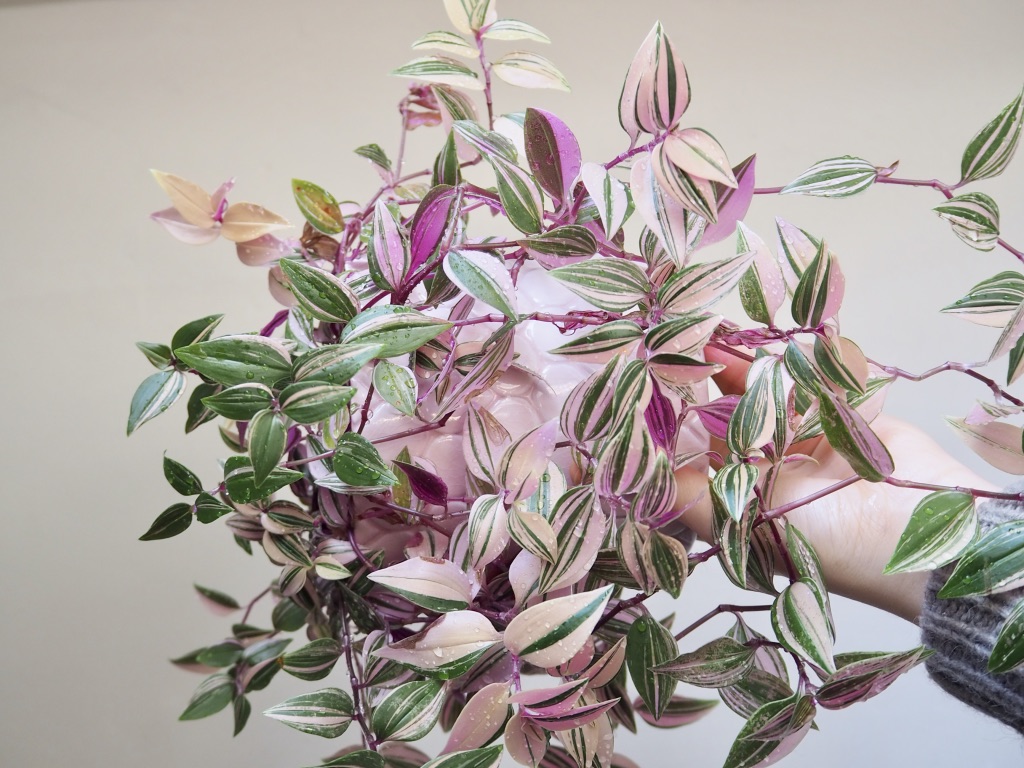
It’s important to remember that a lot of plant care is down to trial + (sometimes) error so don’t be disheartened if you struggle with some aspects of keeping houseplants, it’s a learning curve that is incredibly rewarding + is worth the occasional struggle! I hope my experiments can help you in some way if you also have a somewhat challenging time with this plant over winter.
Thanks for reading —
— Laura

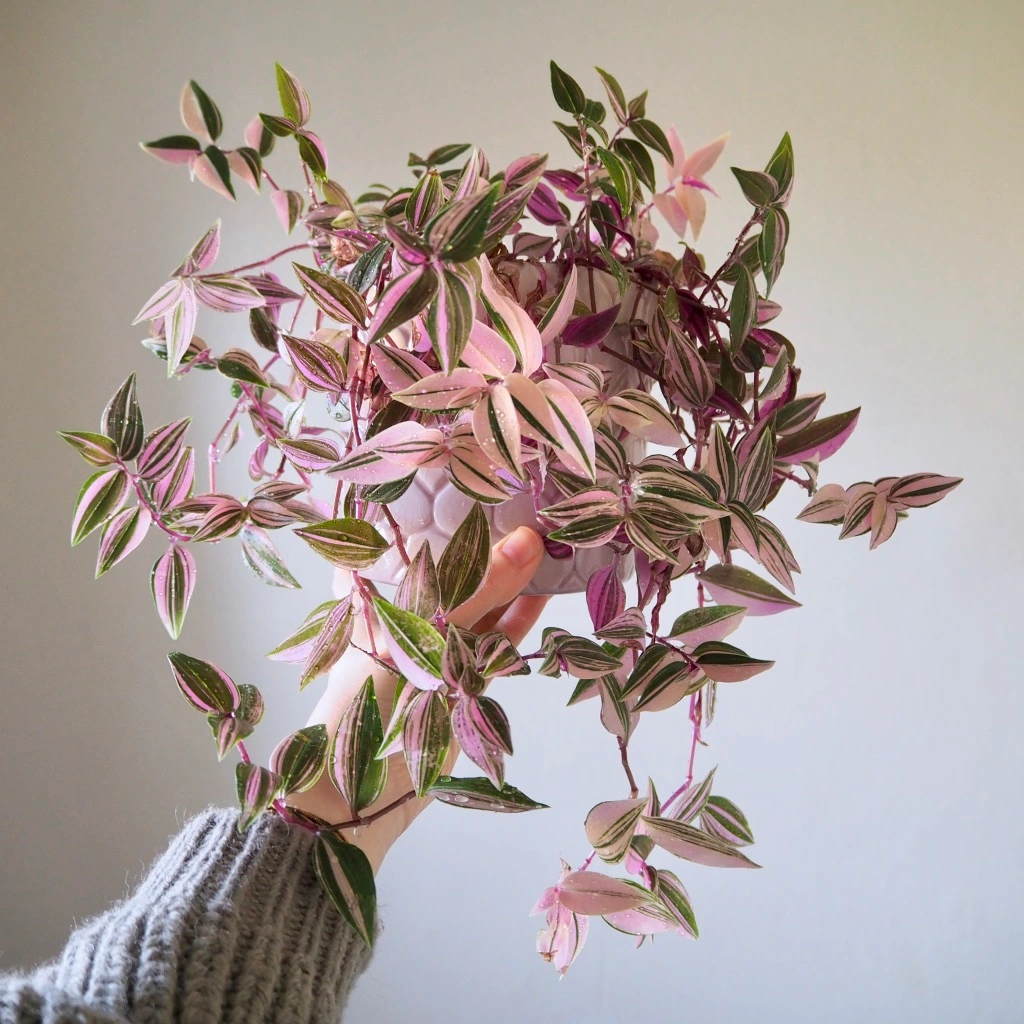
Leave a Reply